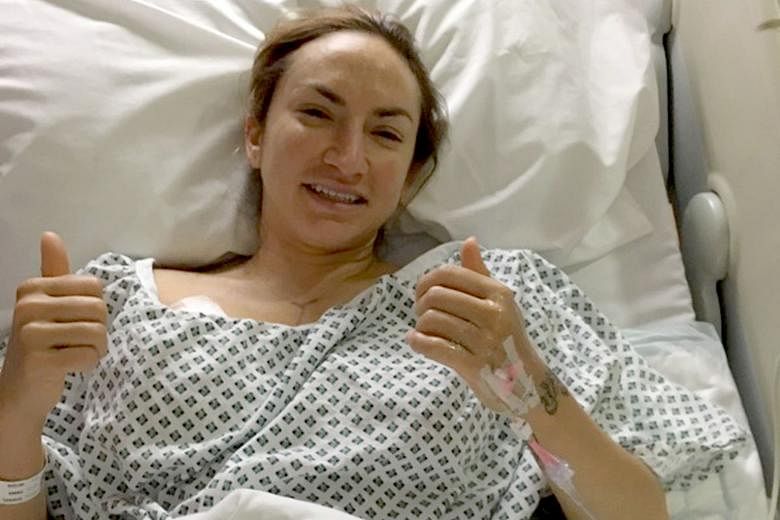Call it the Angelina Jolie effect.
Ever since the US actress said in May 2013 that she had a gene mutation that put her at high risk of getting breast and ovarian cancer, there has been a huge spike in women here testing for the condition.
Jolie first had her breasts removed and then her ovaries.
Before she went public with her condition, only five to 10 women here would test for it each year, said Dr Lee Soo Chin, a senior oncologist researcher at the National University Cancer Institute, Singapore (NCIS). The number has since shot up to between 80 and 100 a year.
Like Jolie, many women are going under the knife if they discover they have the gene mutation.
At just 35, Ms Emma Gabriel, for example, had both her breasts removed last month as a precaution against breast cancer. "It was painful, I'm not going to lie. It was not easy and it was not fun," she said.
She made the difficult decision to undergo the procedure after her mother, Ms Julia Gabriel, 65, founder of the popular Julia Gabriel education centres, discovered she had the gene mutation. The 65-year-old had struggled with ovarian cancer.
Women with the BRCA (breast cancer) gene mutation are five times more likely to get breast cancer and 30 times more likely to get ovarian cancer than others.
The gene is hereditary, and Ms Gabriel tested for it at NCIS.
The health coach and yoga teacher, who grew up in Singapore and now works in London, said it was a "no-brainer decision" to remove her breasts. She told The Straits Times: "I didn't want to go through what my mum went through."
She plans to have her ovaries removed at the age of 40, since most get the cancer after that age.
A small study at NCIS found that about 30 per cent of ovarian cancer patients here have this mutation, higher than the international figure of 15 per cent to 20 per cent, said Dr David Tan, a consultant at NCIS' department of haematology-oncology.
There is an added advantage for ovarian cancer patients to test for the gene, he said. They respond better to platinum-based chemotherapy than women without the mutation. There are also maintenance therapies more suited to those with the mutation, he said, giving them "longer relapse-free intervals".
Knowing patients have the mutation would let doctors put them on these treatments immediately, instead of the normal treatments that are less effective for them.
Almost half the patients undergo the test now when it is suggested to them, said Dr Lee. Others decline.
Said Dr Tan: "Cost is one issue, and the other problem is insurability. They fear that they will not be covered by insurers once they are found to have the gene."
While they will be covered by the basic MediShield Life, some integrated plans might not cover them for these cancers, citing the cause as congenital. But Dr Tan noted that 44 per cent of patients with ovarian cancer who have the BRCA mutation have no family members with breast or ovarian cancers.
For Ms Emma Gabriel, the genetic test may have saved her life. After the operation, doctors found that the right breast had "irregular cells" that could turn cancerous. She said: "It is clear that I made the right decision for my health and my future."
And she opted for breast implants a size bigger than her own. "I should allow myself some joy out of all this." You can read about her experience at www.greenjuiceontherocks.com


